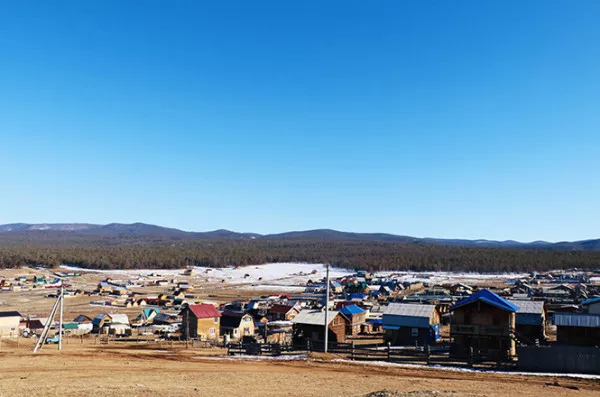
We hadn't thought that the most impressive thing about the town of Hozier would be its small art gallery. Rather than an art gallery, it would be more appropriate to call it a small gallery, with paintings of all sizes hanging on the wooden walls, some unframed and even stacked on a long table at the entrance, for people to browse through and choose from.
The authors of the oil paintings are mostly unknown painters, some even amateurs, and the paintings are almost exclusively about Lake Baikal. This largest freshwater lake in Eurasia, set like a crescent moon on the Siberian continent, has experienced about 25 million years, and now it creeps calmly and deeply, freezing in winter and melting in summer, each season has a unique landscape, and the painters record these landscapes one by one with paint and give them to the people who are attracted by it.
As the only permanently inhabitable town on Olkhon, Khurjar is undoubtedly the best place to station yourself to see Lake Baikal. This tiny town, located in the north-western part of Olkhon Island, looks like a gully in a crescent moon when viewed from above, and I'm afraid that Khurjar is only a shadow of the gully.
From Irkutsk it was nearly a 6 hour drive by bus to reach the town of Khurzhar. It was late winter when we left, and the ice on Lake Baikal had not yet opened up, so the small, ramshackle-looking minibus was able to drive from land directly onto the ice. The road was long and not too good, but the Russian driver was able to drive the bus with a dozen large bags over the ice, and we were crammed into the narrow seats staring out the window at the frozen lake in a cold sweat under our down jackets.
Departure was in the morning and it was nearly 4pm when we arrived. The booking started on the second day and after checking in we started wandering around the town. In March, the lake was still covered in hard ice, but the snow on the land had almost melted. The town is too small, with only 1500 people living there, and the wooden houses are largely built by the residents themselves. The roads are primitive gravel, with deeply sunken ruts on both sides, and as we walked along, whenever a car passed by, it would raise a cloud of sand and dust, with the cold Siberian air and the most unpretentious smell of people on this island town.
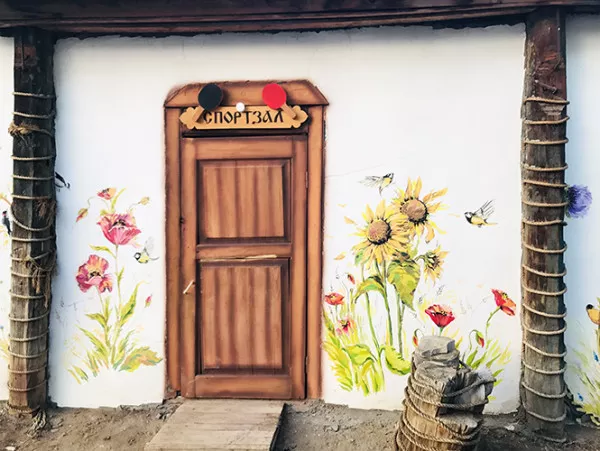
We never thought at first that it would have anything to do with art. It's so small and remote that if you compare it to China, it would be a frontier town at the foot of a mountain. It would have a market and a vegetable market, a school and a clinic, but it would be unlikely to have an art museum, or even a painting, but Hozier has them, and they have someone to take care of them, and they bring art to the town.
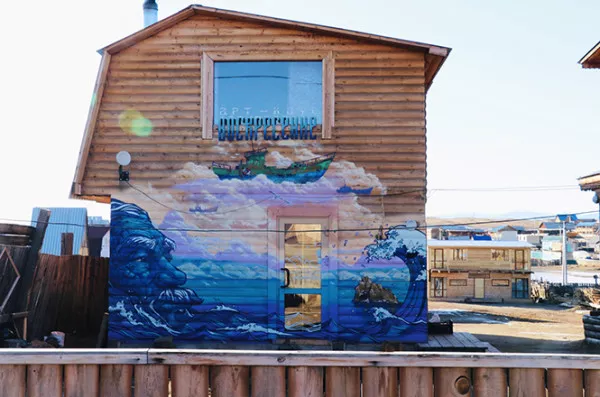
If you look closely, you can see that the people of Hozier are very good at life. The houses in the town are all wooden, but the roofs are all painted in different colors, and some of the owners even use the walls of their outbuildings as canvases, painting the wooden walls with paint, showing fishing boats flying into the sky, moving through the clouds, Lake Baikal being anthropomorphized into an old wise man, the waves being his beard, tumbling in layers, and the shaman's rock standing quietly behind, like a monument. Interestingly, we also accidentally saw the house from someone else's photos, it was Christmas Eve in December, just four months after our previous visit, but the paintings on the wooden walls then were completely different from what we saw, depicting Santa Claus with a moose, showing the owner's care.
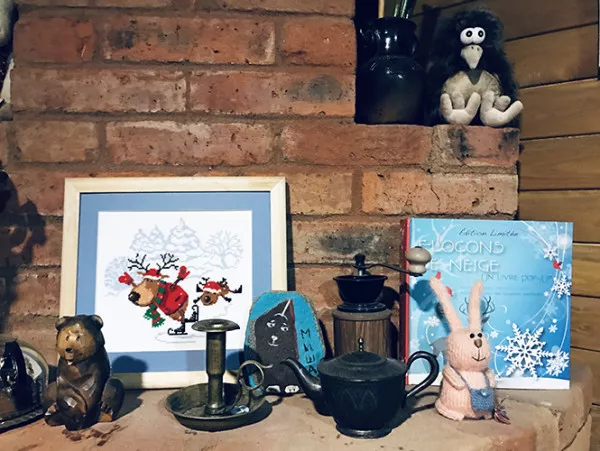
Not only that, but in every little café we visited we always found an interesting variety of paintings and decorations. The cold climate makes fireplaces a necessity in the homes of the town of Hozier, and they have become display cases for families, with cross-stitch and wood carvings, felt and gingerbread men, painted rocks and kettles shaped like Aladdin's lamp, and we entertained the shop's cats, fiddled with the little decorations, and didn't hesitate to praise the owners for their handiwork as they served the coffee.
I ended up taking away a painting from Hozier's art gallery of Shaman Rock in winter, at sunset. The sun was setting, just half blocked by the rocks for a moment, and the sunlight painted the inky blue surface of the frozen lake pink, like the shy blush on the cheeks of a young girl who had been spoken to in love. Attracted by the blush, I bought it for 4,500 rubles and carefully packed it into my luggage. When I unwrapped it at home, I seemed to feel a chill from 52 degrees north. It was a memory that penetrated my mind, and I hung the painting up, and every day afterwards, without glancing at it, I seemed to see Lake Baikal come to life before my eyes.
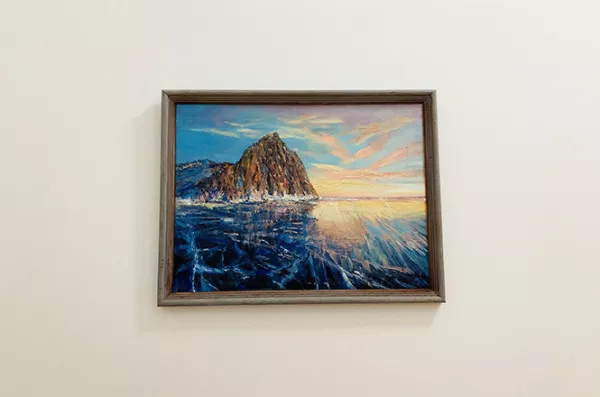
I called a friend and made an appointment to go back one summer day, no longer to linger in the snow and ice and chase the cold, but to see what kind of paintings had been painted on the outside walls of that cabin.